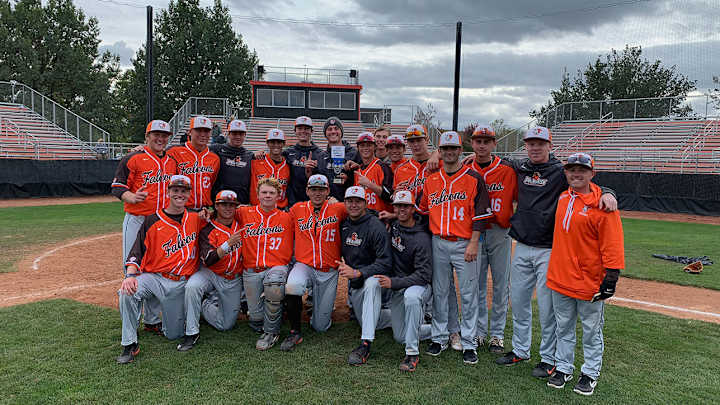Bowling Green Baseball and the Fight to Prevent College Sports Cuts

Five days after Bowling Green State University cut its baseball program, the players assembled on campus to clean out their lockers. When they entered, a staffer handed them black garbage bags.
That felt appropriate. The team had learned on a May 15 Zoom call that their baseball careers were over at BGSU. The school will honor all scholarships and will help anyone transfer who wants to, but the program that produced big leaguers including a pair of World Series champions, Orel Hershiser and Roger McDowell, was no more.
The coronavirus pandemic has left the school with a projected $29 million deficit for next year. Athletic director Bob Moosbrugger—himself a Bowling Green baseball alumnus—has explained that the university needed to trim approximately $2 million from its athletics budget, and that eliminating baseball would account for $500,000 of that figure. The remaining 17 varsity sports will each be tasked with cutting between 5 and 25% of their budgets, more than 100 university staffers have been laid off and all administrators and coaches will be furloughed. (Moosbrugger did not return a request for comment for this story.)
A few players hung up shortly after the announcement. The rest watched, slack-jawed. Moosbrugger asked if anyone had questions. No one did. The news started to trickle through the alumni network.
And then two parallel conversations began. The players mourned. The alumni organized.
“After our first call we were at $23,000,” says Dana Dowers, who played rightfield in the class of 1979 and now runs an insurance agency. “Just one night with six little knuckleheads.”
Bowling Green has said that the baseball program costs $750,000 per year to run, so initially the plan was to lock in $4 million over five years.
But late on Sunday night, the Save BGSU Baseball campaign, led by Dowers, announced that the school had agreed to a structure for the reinstatement of baseball. If the group can commit to $1.5 million over the next three years, renewing in perpetuity, Bowling Green will agree to restore the program. At the time of the announcement, the campaign had pledged for $1.46 million over five years, so the next step will be to ask donors to adjust their timelines.
“TIME IS OF THE ESSENCE!” read the email.
That’s true for a few reasons. The university needs to proceed with its budget. People will lose interest as the summer begins in earnest. And most important, if they don’t sort this out soon, there won’t be much program to save. Most of the 34 players have already entered the transfer portal. At least one has committed elsewhere (senior center fielder Jake Wilson, to Liberty).
For junior first baseman Adam Furnas, the choice is a difficult one. He grew up in Bowling Green, dreaming of starring for the Falcons. When they called to offer him a scholarship and offered him a few weeks to consider it, he asked, “How fast can I give you my answer?”
He can’t imagine leaving the only place he’s ever wanted to be. But without baseball, Bowling Green isn’t that, either. It’s not the walk-off wins he’ll miss, he says. It’s hugging in the dugout. It’s commiserating about the next day’s 6 a.m. lift. It’s pouring into the dining center, 25 strong, and claiming the long table in the center of the room.
The Bowling Green baseball players are not the only student-athletes who stand to lose that experience. The pandemic forced the cancellation of winter and spring NCAA tournaments, including the money-making March Madness, and threatens to erase the football season. At a minimum, it will almost certainly keep fans out of stands. Universities are facing frightening shortfalls. Non-revenue sports across the country are in danger, or are already gone. Furman cut baseball. Old Dominion cut wrestling. Cincinnati cut men’s soccer. Brown cut men’s cross country, women’s equestrian, men’s and women’s fencing, men’s and women’s golf, men’s indoor track and field, men’s outdoor track and field, women’s skiing and men’s and women’s squash—11 sports in all.
“This is the end of [college] athletics as we know it,” says Dowers. “I think we’ve become the model looking forward of what it has to be.”
If the fundraising drive works, maybe they will be. And if it doesn’t, Furnas will trudge back into the dining center next year and stare at that empty table.

Stephanie Apstein is a senior writer covering baseball and Olympic sports for Sports Illustrated, where she started as an intern in 2011. She has covered 10 World Series and three Olympics, and is a frequent contributor to SportsNet New York's Baseball Night in New York. Apstein has twice won top honors from the Associated Press Sports Editors, and her work has been included in the Best American Sports Writing book series. A member of the Baseball Writers Association of America who serves as its New York chapter vice chair, she graduated from Trinity College with a bachelor's in French and Italian, and has a master's in journalism from Columbia University.
Follow stephapstein